
Deutsch-Chinesische Enzyklopädie, 德汉百科
 Portugal
Portugal

 Egypt
Egypt
 Algeria
Algeria

 Eat and Drink
Eat and Drink
 *Olives/Olive oil
*Olives/Olive oil
 Greece
Greece
 Italy
Italy

 Agriculture, forestry, livestock, fishing
Agriculture, forestry, livestock, fishing
 Morocco
Morocco
 Portugal
Portugal
 Spain
Spain
 Syria
Syria
 Tunisia
Tunisia
 Turkey
Turkey
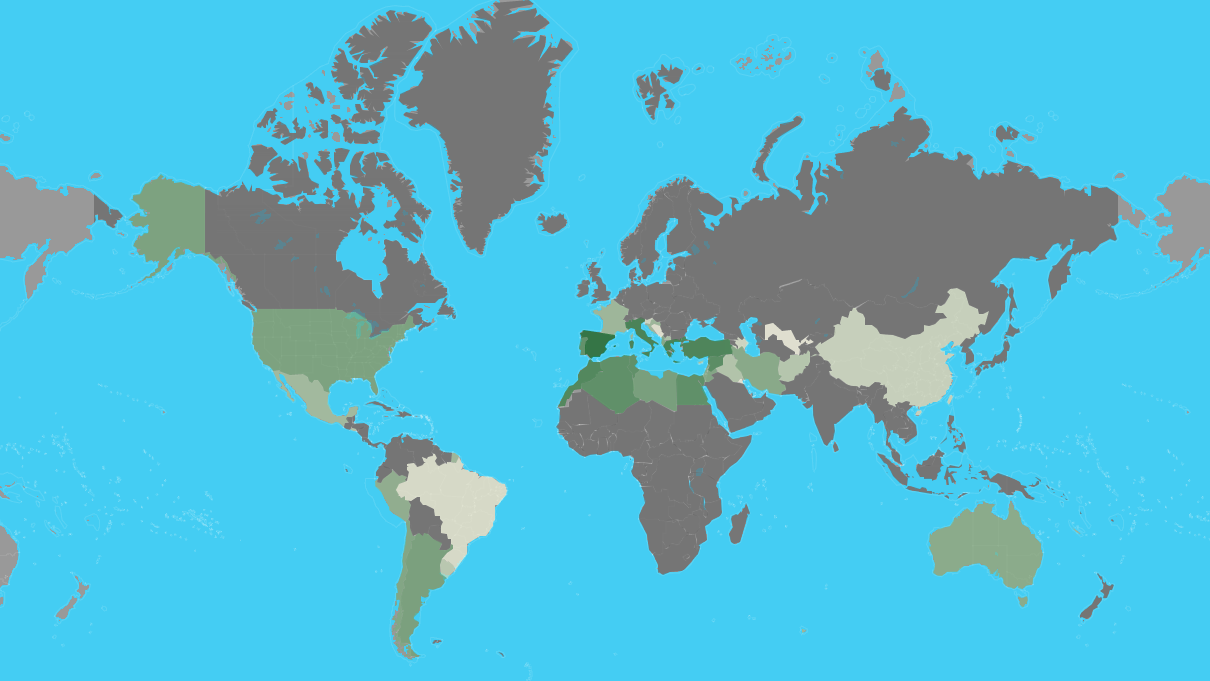
| Rank | Country | Production (Tonnes) | Production per Capita (Kg) | Harvasted Area (Ha) | Yield (Kg/Ha) |
|---|---|---|---|---|---|
| 1 | Spain | 6,559,884 | 141 | 2,573,473 | 2,549 |
| 2 | Greece | 2,343,383 | 218 | 887,177 | 2,641 |
| 3 | Italy | 2,092,175 | 34.6 | 1,165,562 | 1,795 |
| 4 | Turkey | 1,730,000 | 21.4 | 845,542 | 2,046 |
| 5 | Morocco | 1,416,107 | 40.7 | 1,008,365 | 1,404 |
| 6 | Syria | 899,435 | 49.2 | 765,603 | 1,175 |
| 7 | Tunisia | 700,000 | 61.2 | 1,646,060 | 425 |
| 8 | Algeria | 696,962 | 16.4 | 424,028 | 1,644 |
| 9 | Egypt | 694,309 | 7.1 | 67,293 | 10,318 |
| 10 | Portugal | 617,610 | 60.0 | 355,075 | 1,739 |
| 11 | Libya | 188,975 | 29.2 | 357,797 | 528 |
| 12 | Argentina | 175,094 | 3.9 | 61,942 | 2,827 |
| 13 | United States of America | 159,600 | 0.49 | 14,164 | 11,268 |
| 14 | Lebanon | 118,146 | 19.4 | 62,297 | 1,897 |
| 15 | Jordan | 115,813 | 11.3 | 63,963 | 1,811 |
| 16 | Chile | 111,481 | 6.3 | 20,343 | 5,480 |
| 17 | Albania | 99,075 | 34.5 | 38,889 | 2,548 |
| 18 | Palestinian Territories | 95,044 | | 66,645 | 1,426 |
| 19 | Israel | 91,000 | 10.2 | 33,700 | 2,700 |
| 20 | Iran | 85,049 | 1.0 | 66,915 | 1,271 |
| 21 | Australia | 75,083 | 3.0 | 32,747 | 2,293 |
| 22 | Peru | 56,157 | 1.8 | 17,119 | 3,281 |
| 23 | Croatia | 31,183 | 7.4 | 18,184 | 1,715 |
| 24 | France | 27,102 | 0.40 | 17,354 | 1,562 |
| 25 | Mexico | 21,650 | 0.17 | 5,094 | 4,250 |
| 26 | Cyprus | 13,499 | 15.8 | 10,612 | 1,272 |
| 27 | Macedonia | 12,369 | 6.0 | 5,852 | 2,114 |
| 28 | El Salvador | 10,840 | 1.6 | 5,227 | 2,074 |
| 29 | Iraq | 9,332 | 0.24 | 2,294 | 4,068 |
| 30 | Afghanistan | 7,647 | 0.24 | 2,200 | 3,476 |
| 31 | Uruguay | 6,159 | 1.8 | 2,985 | 2,063 |
| 32 | Taiwan | 2,621 | 0.11 | 318 | 8,256 |
| 33 | China | 2,621 | 0.00188 | 318 | 8,256 |
| 34 | Slovenia | 1,662 | 0.80 | 1,173 | 1,417 |
| 35 | Azerbaijan | 1,586 | 0.16 | 2,979 | 533 |
| 36 | Brazil | 647 | 0.00309 | 574 | 1,127 |
| 37 | Bosnia and Herzegovina | 359 | 0.095 | 254 | 1,416 |
| 38 | Montenegro | 250 | 0.40 | 90.0 | 2,778 |
| 39 | Uzbekistan | 116 | 0.00355 | 117 | 987 |
| 40 | Kuwait | 60.0 | 0.014 | 35.0 | 1,702 |
| 41 | Malta | 30.0 | 0.063 | 28.0 | 1,064 |
 Australia
Australia
 Belgium
Belgium
 Chile
Chile
 Denmark
Denmark
 Germany
Germany
 Estonia
Estonia
 Finland
Finland
 France
France
 Greece
Greece
 Ireland
Ireland
 Iceland
Iceland
 Israel
Israel
 Italy
Italy
 Japan
Japan
 Canada
Canada
 Luxembourg
Luxembourg
 Mexico
Mexico
 New Zealand
New Zealand
 Netherlands
Netherlands
 Norwegen
Norwegen
 OECD
OECD
 Emiel van Lennep
Emiel van Lennep
 OECD
OECD
 Don Johnston
Don Johnston
 OECD
OECD
 Jean-Claude Paye
Jean-Claude Paye
 OECD
OECD
 José Ángel Gurría
José Ángel Gurría
 OECD
OECD
 Staffan Sohlman
Staffan Sohlman
 OECD
OECD
 Thorkil Kristensen
Thorkil Kristensen
 Austria
Austria
 Poland
Poland
 Portugal
Portugal
 Republic of Korea
Republic of Korea
 Sweden
Sweden
 Switzerland
Switzerland
 Slovakia
Slovakia
 Slovenia
Slovenia
 Spain
Spain
 Czech Republic
Czech Republic
 Turkey
Turkey
 Hungary
Hungary
 United States
United States
 United Kingdom
United Kingdom

 Important International Organizations
Important International Organizations
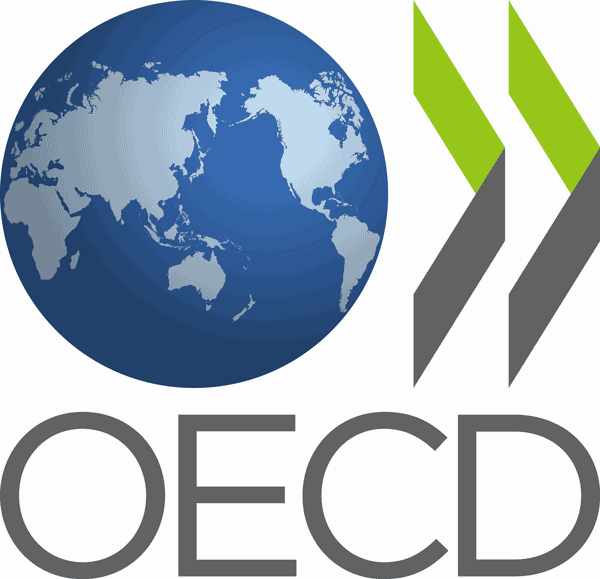
経済協力開発機構(けいざいきょうりょくかいはつきこう)は、国際経済全般について協議することを目的とした国際機関。公用語の正式名称は、英語では"Organisation[1] for Economic Co-operation and Development"(イギリス英語表記)、フランス語では"Organisation de Coopération et de Développement Economiques"。略称は英語ではOECD、フランス語ではOCDE。
本部事務局はパリ16区の旧ラ・ミュエット宮殿に置かれている。事務総長はアンヘル・グリア。
The Organisation for Economic Co-operation and Development (OECD; French: Organisation de Coopération et de Développement Économiques, OCDE) is an intergovernmental economic organisation with 37 member countries,[1] founded in 1961 to stimulate economic progress and world trade. It is a forum of countries describing themselves as committed to democracy and the market economy, providing a platform to compare policy experiences, seek answers to common problems, identify good practices and coordinate domestic and international policies of its members. Generally, OECD members are high-income economies with a very high Human Development Index (HDI) and are regarded as developed countries. As of 2017, the OECD member countries collectively comprised 62.2% of global nominal GDP (US$49.6 trillion)[3] and 42.8% of global GDP (Int$54.2 trillion) at purchasing power parity.[4] The OECD is an official United Nations observer.[5]
In 1948, the OECD originated as the Organisation for European Economic Co-operation (OEEC),[6] led by Robert Marjolin of France, to help administer the Marshall Plan (which was rejected by the Soviet Union and its satellite states).[7] This would be achieved by allocating United States financial aid and implementing economic programs for the reconstruction of Europe after World War II. (Similar reconstruction aid was sent to the war-torn Republic of China and post-war Korea, but not under the name "Marshall Plan".)[8]
In 1961, the OEEC was reformed into the Organisation for Economic Co-operation and Development by the Convention on the Organisation for Economic Co-operation and Development and membership was extended to non-European states.[9][10] The OECD's headquarters are at the Château de la Muette in Paris, France.[11] The OECD is funded by contributions from member countries at varying rates and had a total budget of €386 million in 2019.[2]
Although OECD does not have a power to enforce its decisions, which further require unanimous vote from its members, it is recognized as highly influential publisher of mostly economic data through publications as well as annual evaluations and rankings of members countries.[12]
L'Organisation de coopération et de développement économiques (OCDE) est une organisation internationale d'études économiques, dont les pays membres — des pays développés pour la plupart — ont en commun un système de gouvernement démocratique et une économie de marché. Elle joue essentiellement un rôle d'assemblée consultative1.
L'OCDE a succédé à l'Organisation européenne de coopération économique (OECE) issue du plan Marshall et de la Conférence des Seize (Conférence de coopération économique européenne) qui a existé de 1948 à 1960. Son but était l'établissement d'une organisation permanente chargée en premier lieu d'assurer la mise en œuvre du programme de relèvement commun (le plan Marshall), et, en particulier, d'en superviser la répartition2.
En 2020, l'OCDE compte 37 pays membres et regroupe plusieurs centaines d'experts. Elle publie fréquemment des études économiques et sociales — analyses, prévisions et recommandations de politique économique — et des statistiques, principalement concernant ses pays membres.
Le siège de l'OCDE se situe à Paris (16e), au château de la Muette. L'organisation possède également des bureaux dans plusieurs autres métropoles, notamment à Berlin, Mexico, Tokyo et Washington.
L'Organizzazione per la cooperazione e lo sviluppo economico (OCSE) – in inglese Organization for Economic Co-operation and Development (OECD), e in francese Organisation de coopération et de développement économiques (OCDE) – è un'organizzazione internazionale di studi economici per i paesi membri, paesi sviluppati aventi in comune un'economia di mercato.
L'organizzazione svolge prevalentemente un ruolo di assemblea consultiva che consente un'occasione di confronto delle esperienze politiche, per la risoluzione dei problemi comuni, l'identificazione di pratiche commerciali e il coordinamento delle politiche locali e internazionali dei paesi membri[1]. Ha sede a Parigi nello Château de la Muette[2].
Gli ultimi paesi ad aver aderito all'OCSE sono la Colombia (28 aprile 2020),la Lettonia (1º luglio 2016) e la Lituania (5 luglio 2018), per un totale di 36 paesi membri.
La Organización para la Cooperación y el Desarrollo Económico1 (OCDE) es un organismo de cooperación internacional, compuesto por 37 estados,34 cuyo objetivo es coordinar sus políticas económicas y sociales. La OCDE fue fundada en 1961 y su sede central se encuentra en el Château de la Muette en París (Francia). Los idiomas oficiales de la entidad son el francés y el inglés.2
En la OCDE, los representantes de los países miembros se reúnen para intercambiar información y armonizar políticas con el objetivo de maximizar su crecimiento económico y colaborar a su desarrollo y al de los países no miembros.
Conocida como «club de los países ricos»,56 a partir de 2017, sus países miembros comprendieron colectivamente el 62,2 % del PIB nominal global (US$49,6 billones) y el 42,8 % del PIB global (Int US$54,2 billones).7
Организа́ция экономи́ческого сотру́дничества и разви́тия (сокр. ОЭСР, англ. Organisation for Economic Co-operation and Development, OECD) — международная экономическая организация развитых стран, признающих принципы представительной демократии и свободной рыночной экономики.
Создана в 1948 году под названием Организа́ция европе́йского экономи́ческого сотру́дничества (англ. Organisation for European Economic Co-operation, OEEC) для координации проектов экономической реконструкции Европы в рамках плана Маршалла.
Штаб-квартира организации располагается в Шато де ла Мюетт, в Париже. Генеральный секретарь (с 2006 года) — Хосе Анхель Гурриа Тревиньо (Мексика). Руководящим органом ОЭСР является совет представителей стран — членов организации. Все решения в нём принимаются на основе консенсуса.
По данным на 2011 год, в странах ОЭСР проживало 18 % населения мира[2].


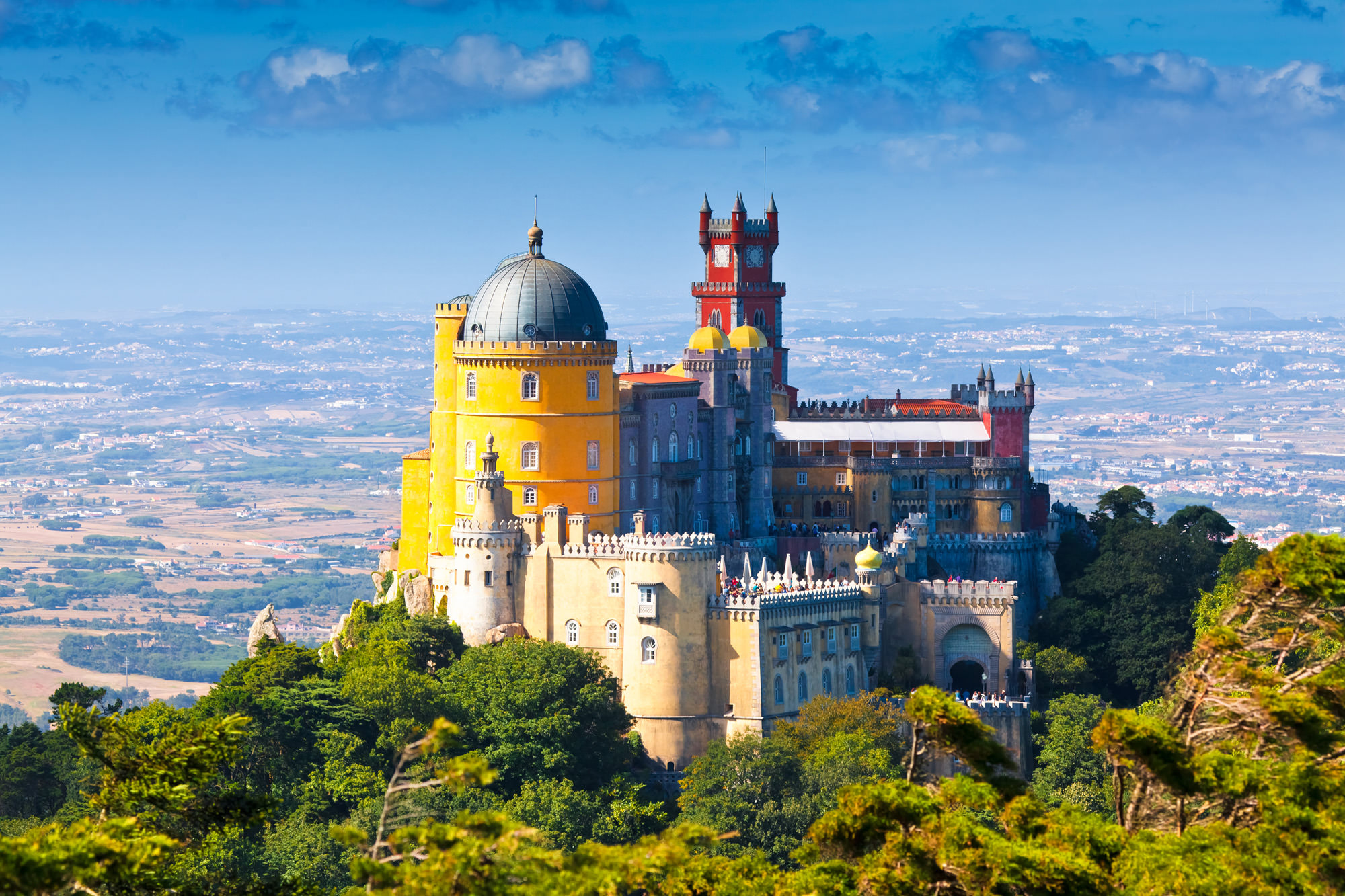
佩纳宫(葡萄牙语:Palácio Nacional da Pena)是葡萄牙的一座19世纪浪漫主义宫殿,位于里斯本附近的辛特拉市圣伯多禄堂区(São Pedro de Penaferrim)一个山丘的山顶,晴天在里斯本亦清晰可见。1995年,这个宫殿作为辛特拉文化景观的一部分入选为世界遗产。





ヴァスコ・ダ・ガマ橋 (Ponte Vasco da Gama) は、ポルトガルのテージョ川河口(三角江)部に架けられた斜張橋。リスボン近郊のサカヴェン (Sacavém) とモンチジョ (Montijo) を結ぶ。全長は17.2kmあり、ヨーロッパで最も長い橋として知られている。
1995年に着工され、リスボン国際博覧会開催直前の1998年3月29日に開通した。ヴァスコ・ダ・ガマ橋という名前は、航海者ヴァスコ・ダ・ガマのインド到達500周年を記念して付けられた。上り(モンチジョからサカヴェンに向かう)方向のみ通行料2.2ユーロが課される。
サカヴェン側ではA1、第2環状、A8と、モンチジョ側では、A12に接続している。リスボンの他の橋(4月25日橋)の混雑を軽減する目的で建設された。
斜張橋部が100km/h制限になっている以外、ほかの高速道路と同じように120km/hの速度制限で、橋は6車線になっている。強風、雨、霧のときは速度制限は90km/hになる。
The Vasco da Gama Bridge (Portuguese: Ponte Vasco da Gama; pronounced [ˈpõt(ɨ) ˈvaʃku dɐ ˈɡɐmɐ]) is a cable-stayed bridge flanked by viaducts that spans the Tagus River in Parque das Nações in Lisbon, the capital of Portugal.
It is the longest bridge in the European Union, and the second longest in all of Europe after the Crimean Bridge[7] with a total length of 12.3 kilometres (7.6 mi), including 0.8 kilometres (0.50 mi) for the main bridge and 11.5 kilometres (7.1 mi) in viaducts.[3] The bridge is served by 4.8 kilometres (3.0 mi) of dedicated access roads.[3] It was built to alleviate the congestion on Lisbon's 25 de Abril Bridge, and eliminate the need for traffic between the country's northern and southern regions to pass through the capital city.[8]
Construction began in February 1995; the bridge was opened to traffic on 29 March 1998, just in time for Expo 98, the World's Fair that celebrated the 500th anniversary of the discovery by Vasco da Gama of the sea route from Europe to India.
Le pont Vasco da Gama est un viaduc continu qui franchit l'estuaire du Tage en sa partie large, au nord de Lisbonne sur une distance de 12,3 km1. Sa longueur hors-tout de plus de 17 km en fait le deuxième plus grand d'Europe2 après le pont de Crimée3 et le 38e plus grand au monde. La construction (qui se justifie par le fait qu'il fallait dégorger le Pont du 25 avril) a commencé en 1995 et le pont a été ouvert au public le 29 mars 1998, juste avant l'exposition universelle Expo '98 qui célébrait le 500e anniversaire de la découverte de la route maritime vers l'Inde par Vasco de Gama. Ce pont était une nécessité mais plusieurs foyers d'habitation ont dû être relogés.
Conçu pour résister à un tremblement de terre 4,5 fois plus puissant que celui de 1755 et à des vents atteignant 250 km/h, il est bâti sur des pieux de 2,2 m et 1,7 m de diamètre et ses fondations s'enfoncent à 95 m en dessous du niveau de la mer. Du fait de la longueur du pont, la courbure de la Terre a dû être prise en compte dans le calcul de l'emplacement des piles : sans cela, une erreur d'un mètre serait apparue au bout du pont4. Son coût de construction est estimé à environ 900 millions d'euros. Les piles du pont ont été réparées en 20175
Il ponte Vasco da Gama è un ponte che attraversa il fiume Tago e collega Montijo e Sacavém all'interno dell'area della Grande Lisbona e vicino al Parque das Nações, dove si è tenuto l'Expo '98, l'esposizione universale che celebrava il 500º anniversario della scoperta della rotta che conduceva dall'Europa all'India compiuta da Vasco da Gama. Fa parte del percorso della Autoestrada A12.
El puente Vasco da Gama es un puente atirantado sobre el río Tajo, en el área de la Gran Lisboa, que conecta Montijo y Sacavém, muy próximo al Parque das Nações, donde se realizó la Expo '98. Inaugurado el 4 de abril de 1998, el puente es el segundo2 más largo de Europa, con sus 17,3 km (0,8 km de puente principal y 11,5 km de viaductos), de los cuales 10 están sobre las aguas del estuario del Tajo. La anchura de la pista es de 30 metros, y la longitud de la mayor luz es de 420 metros. Se construyó a fin de constituir una alternativa al puente 25 de Abril para el tráfico que circula entre el norte y el sur del país, por la zona de la capital portuguesa, pero a pesar de haber desviado una parte significativa del tráfico que no necesitaba pasar por el centro de Lisboa, rápidamente se hizo clara la necesidad de una tercera travesía del río Tajo, más hacia el oeste. En cuanto a su construcción fue necesario tomar cuidados especiales con el impacto ambiental, visto que pasa muy próximo al parque natural del Estuario del Tajo, una importante área de nidificación de aves acuáticas. Fue también necesario realojar a 300 familias. El nombre del puente conmemora los 500 años de la llegada de Vasco da Gama a la India, en 1498.
Мост Ва́ско да Га́ма (порт. Ponte Vasco da Gama, произношение: [põt(ɨ) vaʃku dɐ gɐmɐ]) — вантовый мост, переходящий в виадук, через реку Тежу к юго-востоку от Лиссабона, Португалия. До открытия автодорожной части Крымского моста между Краснодарским краем и Крымом в мае 2018 года был[a] самым длинным мостом в Европе (включая виадуки), длина всего транспортного перехода составляет 17,2 км, в том числе 0,829 км вантового моста, 11,5 км виадуки и 4,8 км подъездных дорог. Мост снижает интенсивность движения по второму мосту Лиссабона (Мост 25 апреля) и является частью автодороги A12, идущей из Лиссабона в Сетубал.
Движение по мосту было открыто 29 марта 1998, через 18 месяцев после начала строительства, перед выставкой Expo 98. В том году отмечалось 500-летие открытия Васко да Гама морского пути из Европы в Индию.
 International cities
International cities
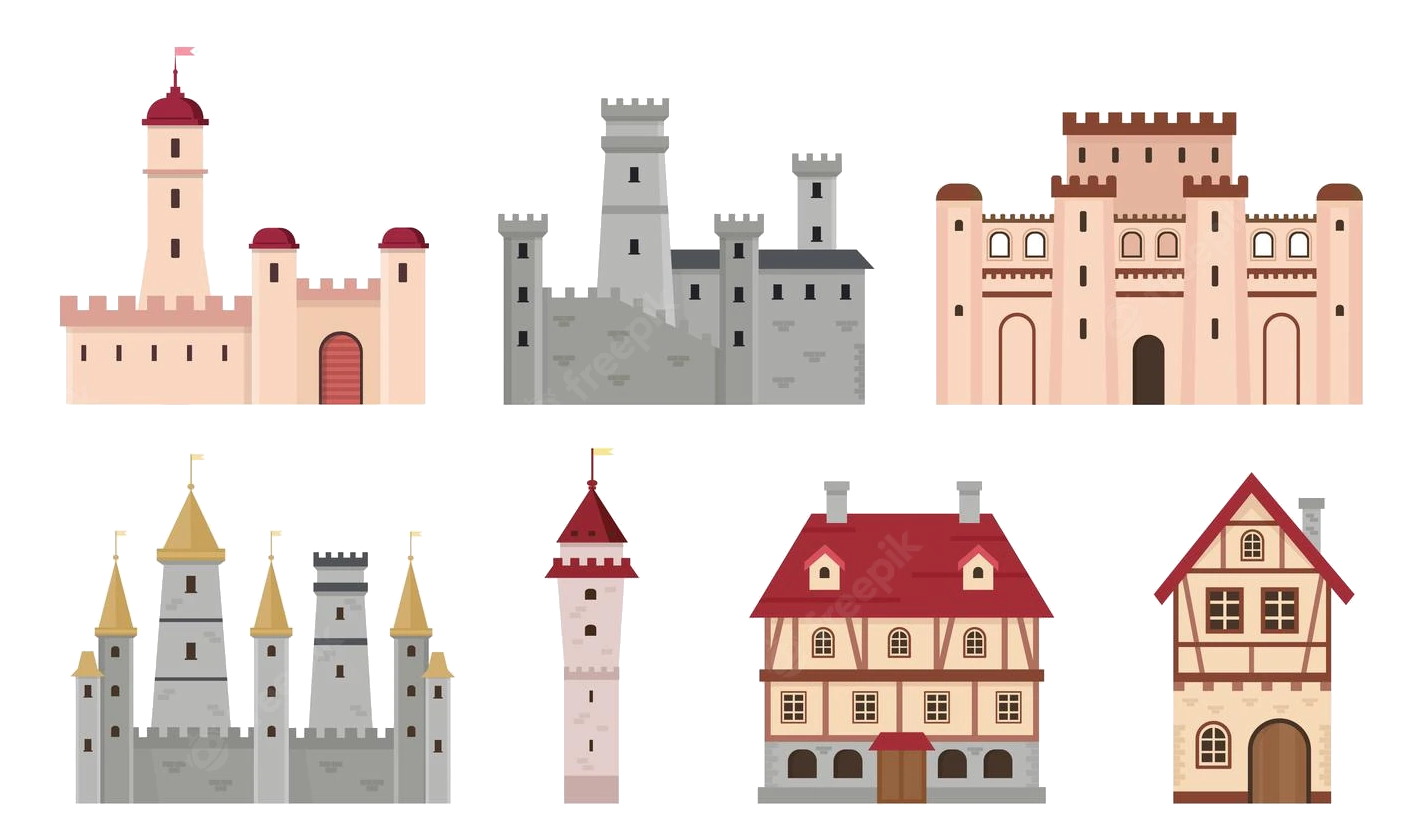 Medieval cities in Europe
Medieval cities in Europe
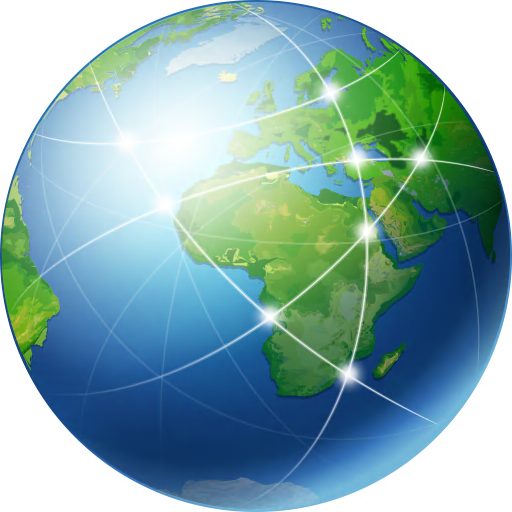 Geography
Geography
 Economy and trade
Economy and trade
 Architecture
Architecture

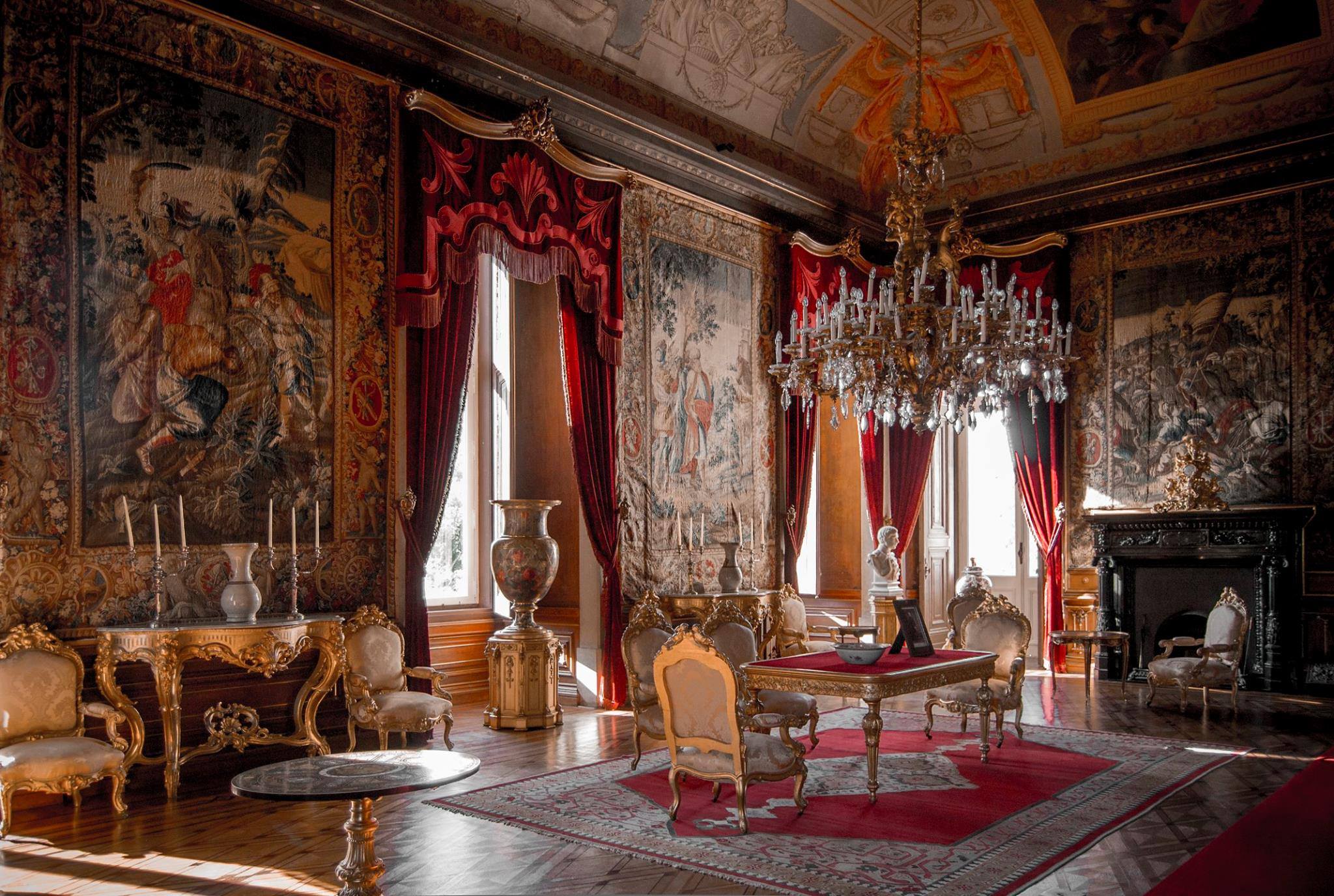


 Party and government
Party and government
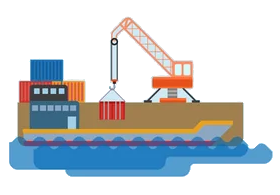 Important port
Important port